Art Deco buildings in Mumbai are more than just old structures tucked in different areas of downtown. These architectural gems are part of the city’s soul, quietly standing in the shadows of the towering skyscrapers.
As a Mumbaikar, I’ve witnessed this city transform in ways that sometimes feel almost unrecognizable. Chawls and theatres that once defined our neighbourhoods have given way to glass-and-steel giants, flashy malls, and endless construction.
Flyovers, roads and bridges that connected us to different localities are either demolished or left to ruined. The city is marred with dugged up roads that symbolize giant graves of development that will one day consume the memories we once cherished.
Yet, the Mumbai Art Deco buildings have always been there, almost unnoticed, like silent witnesses to it all. They’ve watched the city evolve, untouched by the frenzy around them, their beauty hidden in plain sight.
I’m sure since most of them are in the downtown area, millions pass by them daily, busy with their commitments. These architectural gems, often overlooked, are reminders of a time when Mumbai had a different rhythm—one that’s slowly fading into the background but is worth rediscovering.
Brief History of Art Deco in Mumbai
The history of Art Deco architecture in Mumbai is a captivating chapter in the city’s architectural story. The city’s Art Deco buildings date back to the 1930s, when a wave of modernization swept across India.
Influenced by the global Art Deco movement, these buildings are known for their clean lines, geometric shapes, and distinctive style, featuring elements like pastel colours and nautical motifs.
What makes Mumbai’s Art Deco heritage even more remarkable is the sheer number of these buildings—second only to Miami, making the city a significant hub for this architectural style.
The city’s Art Deco buildings are a testament to a bygone era of elegance and sophistication, standing proudly alongside the more modern skyscrapers and colonial structures that shape Mumbai’s skyline today.
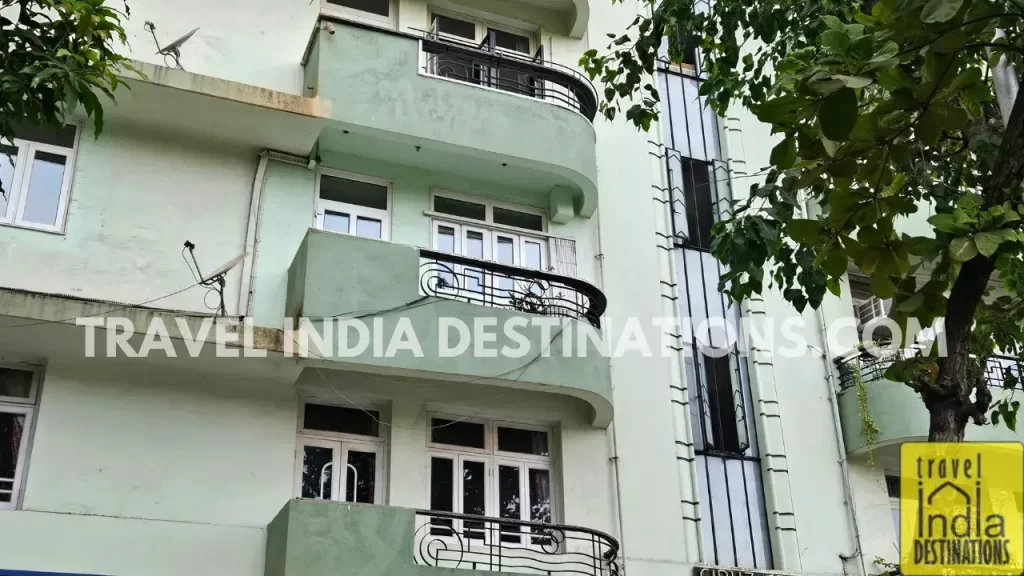
In 2018, Mumbai’s Victorian and Art Deco Ensembles earned UNESCO World Heritage status, further solidifying the city’s unique blend of architectural styles. This recognition highlights the significance of these buildings—not just for their aesthetic value, but also for their historical and cultural importance.
Various Victorian Gothic public buildings lie on the east side of the Oval Maidan like the iconic Rajabai Tower and the Elphinstone College building. On the other hand, some of the best Art Deco buildings in Mumbai are on the west side of the Oval ground.
The Art Deco buildings in Mumbai are particularly special because they offer a glimpse into a period of rapid urban development and cultural change, showcasing the city’s architectural evolution while reflecting the global trends of the early 20th century.
The Art Deco Style in Mumbai: What Makes It Unique
Before the virtual tour of Mumbai’s best Art Deco buildings, let’s explore the style behind them.
You see, Art Deco structures are not just about aesthetics – they reflect the optimism, technological advancements and global influences of the early twentieth century.
Let’s dig deeper into why Art Deco style buildings are designed the way they are.
Splash of Pastel Colours
Various architectural styles, before Art Deco, like Gothic Revival, Neoclassical and Indo-Saracenic focused on dark tones. In contrast to that, Art Deco buildings embraced pastel colours like mint green, canary yellow, pale pink and soft blue. These colours indicate a break from the past symbolizing progress, leisure and a fresh modern outlook.
If you’re in Mumbai, one of the easiest ways to see this difference is to go stand in the Oval Maidan. On the east side, you’ll see the Bombay High Court, Mumbai University building, and the iconic Rajabai Clock Tower. On the west side, you will see a line of residential buildings in pastel shades that reflect the vibrancy of the Art Deco style.
The good thing is that these cool bright colours also work well in Mumbai’s tropical climate making them a treat to watch against the bright blue sky.
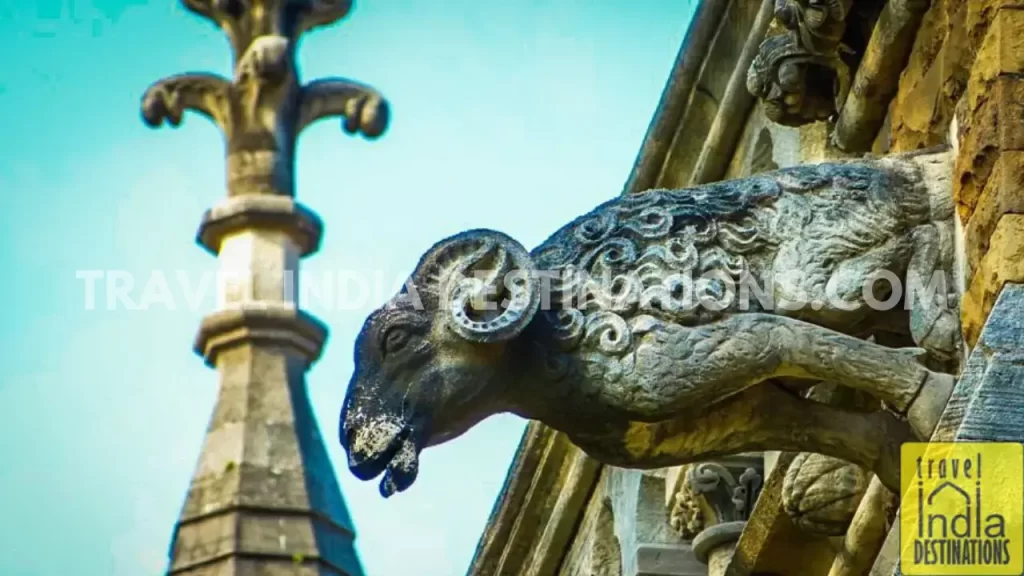
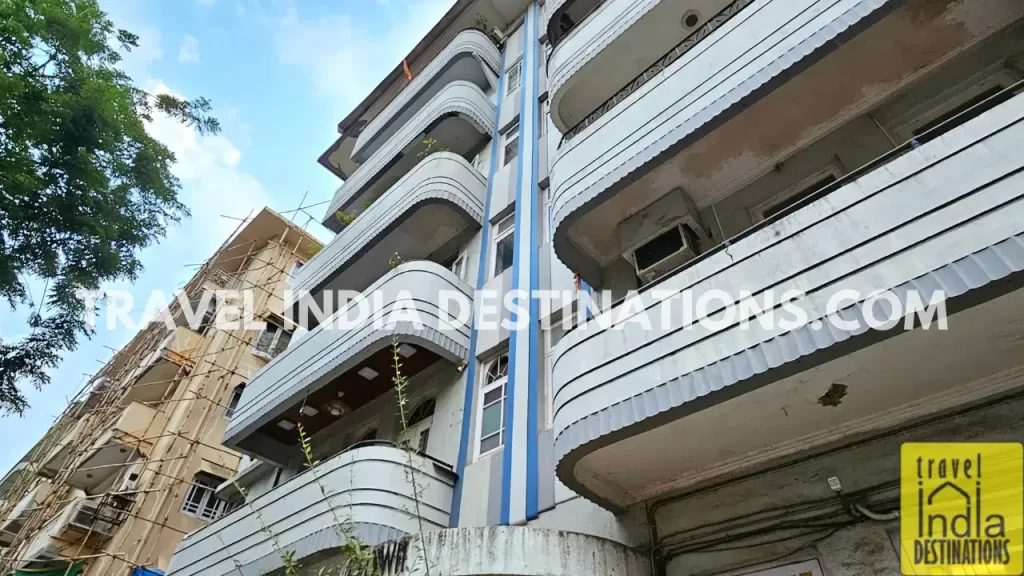
Inclusion of Nautical Elements
The early twentieth century especially the 1920s and 30s saw fascination with speed, travel and the machine age. Almost a century ago, ocean liners, cars, and aeroplanes symbolized a new era. This is reflected in the Art Deco style buildings you see around the world.
Mumbai was no exception. As a bustling natural port city, it absorbed these influences, incorporating ship-like balconies, porthole windows and wave-like motifs. These buildings today are a nod to Mumbai’s maritime heritage and a celebration of the modern world.
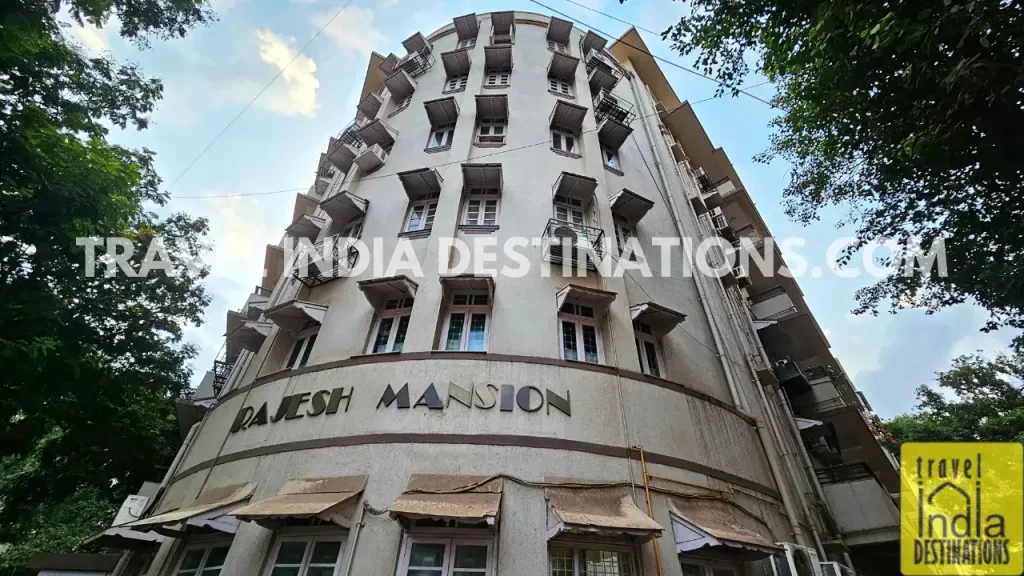
Incorporating Streamlined Forms
Unlike the Gothic and Victorian architectural styles, Mumbai Art Deco buildings incorporate streamlined forms. This symbolizes speed and efficiency because the Art Deco style focuses on being dynamic rather than static.
Gone were the days of pointed arches, intricate ornamentation and heavy detailing. During the Art Deco movement in Mumbai, buildings had smooth geometric facades and aerodynamic curves that made them sleek and aesthetically futuristic.
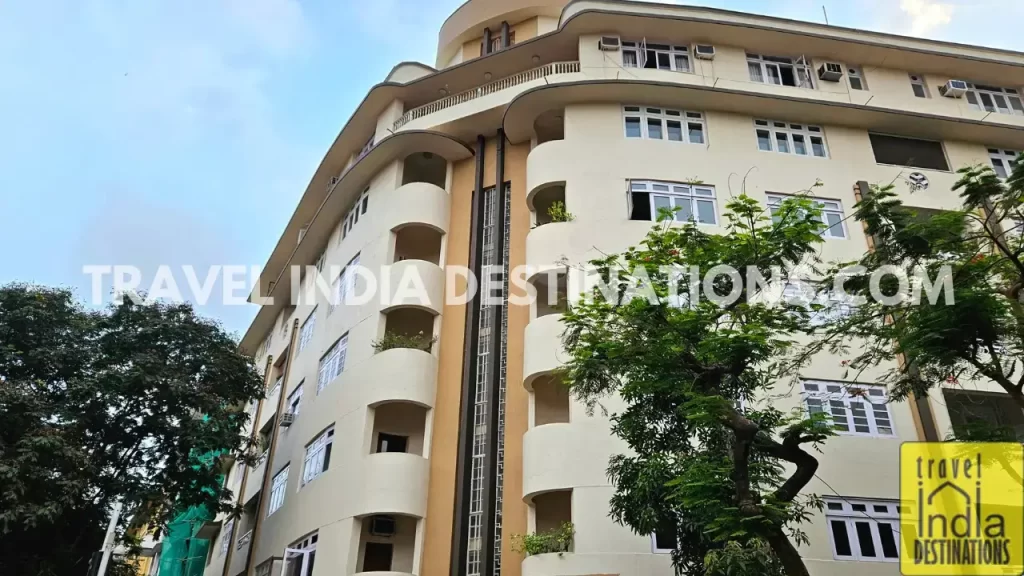
Mumbai vs. Miami: Two Cities, Two Art Deco Stories
While both Mumbai and Miami are known for their Art Deco heritage, the way the style evolved in each city reflects their distinct histories, climates, and cultural influences.
1. Colour Palette & Ornamentation
Miami: Known for its bold, tropical hues—vivid blues, flamingo pinks, and bright yellows—often accented with neon lighting. Miami’s Art Deco buildings embrace a playful, almost futuristic aesthetic.
Mumbai: Uses softer pastel shades like pale yellows, mint greens, and peach tones. Instead of neon, Mumbai’s buildings often feature intricate motifs inspired by Indian textiles and decorative elements.
2. Design & Structure
Miami: Favors curved edges, porthole windows, and smooth, stuccoed surfaces. Many buildings have strong horizontal lines, resembling the streamlined look of ships and cars from the 1920s and 30s.
Mumbai: While also streamlined, Mumbai’s Art Deco buildings have more geometric patterns, ziggurats, and tropical influences like sunburst motifs, chhajjas (Indian-style overhangs), and vertical fins to enhance height.
3. Cultural Adaptations
Miami: Its Art Deco district flourished as a resort-style escape, with hotels and apartment buildings catering to vacationers and retirees.
Mumbai: Art Deco was integrated into everyday life—primarily in residential buildings and cinemas—making it a more functional, lived-in style rather than just a tourist attraction.
4. Influence of Local Climate
Miami: Buildings feature flat roofs and large glass windows to embrace the seaside lifestyle, often prioritizing aesthetics over practicality.
Mumbai: Adapted Art Deco to suit the monsoon-heavy climate with deeper balconies, recessed windows, and overhanging ledges to provide shade and rain protection.
This clearly indicates that Mumbai Art Deco buildings are not just mere copies of Miami’s, but an evolution tailored to the city’s unique environment, culture and lifestyle.
Best Art Deco Buildings in Mumbai: A Visual Tour
The best part about Mumbai Art Deco buildings is that they are located in different city neighbourhoods such as Churchgate, Colaba, Cumbala Hill, Fort, Mohammed Ali Road, Dadar, Matunga, and Bandra. This allows you to explore a wide range of areas and see various styles of Art Deco buildings in Mumbai.
Let’s take a quick look at some of the Art Deco buildings that tell you stories of what Mumbai was like when it was Bombay.
Eros Cinema
Let’s begin with one of the most iconic Art Deco buildings that you can find easily in Mumbai – Eros Cinema. This famous movie theatre opened in 1938 and is located right opposite Churchgate station. The movie theatre is now renovated into a modern single-screen IMAX theatre. Check out my dedicated post on Eros INOX IMAX, complete with images, for a closer look at this iconic landmark.
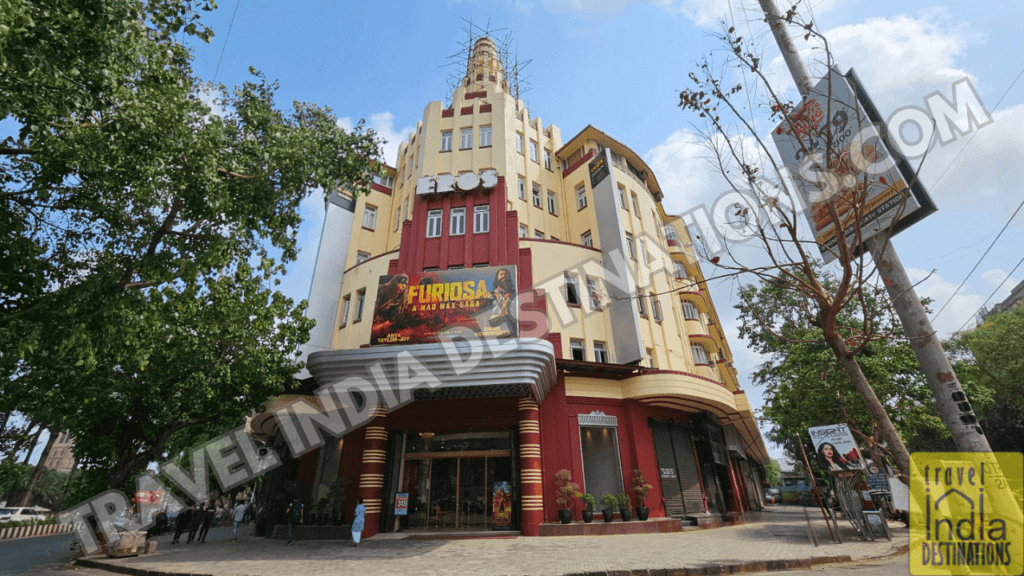
While the interiors are modernized, the exteriors of the building stay the same. Eros Cinema building takes inspiration from Streamline Moderne-style buildings across the globe. The architect Shorabji Bhedwar stylishly blends the idea of a “cruise ship docking into a port” within the architecture of this Art Deco building.
Oval Maidan Buildings
From the Eros Cinema building when you take Maharshi Karve Road you come across a lineup of Art Deco buildings also known as Oval Maidan Buildings. The reason they are called Oval Maidan Buildings is because they are right opposite this recreational sports ground.
This is where you will have to Walk-Stop-and-Admire because almost every building is an Art Deco building. This group of prominent Art Deco buildings in Mumbai was among the first to display elegant lines and vibrant pastel shades.
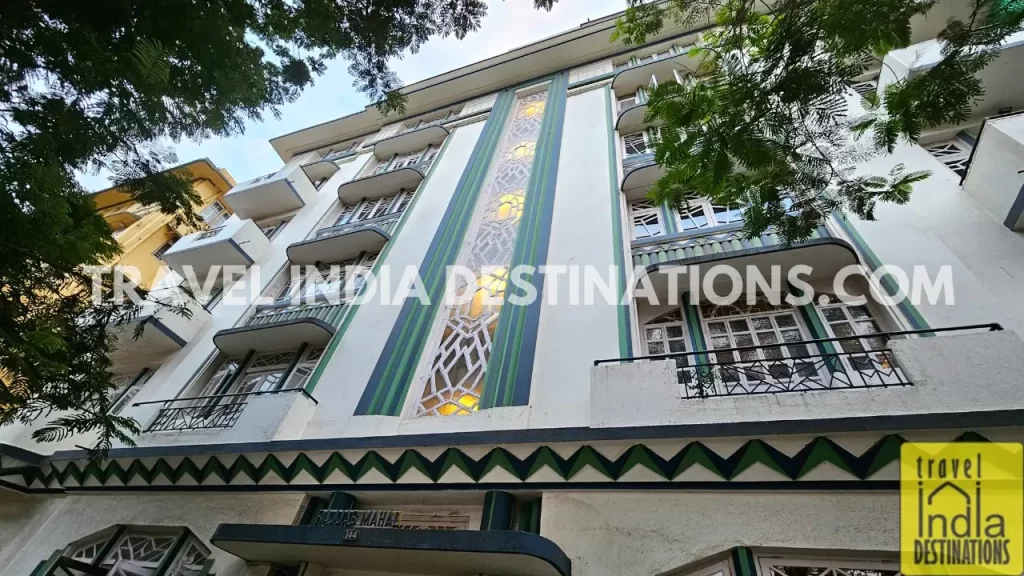
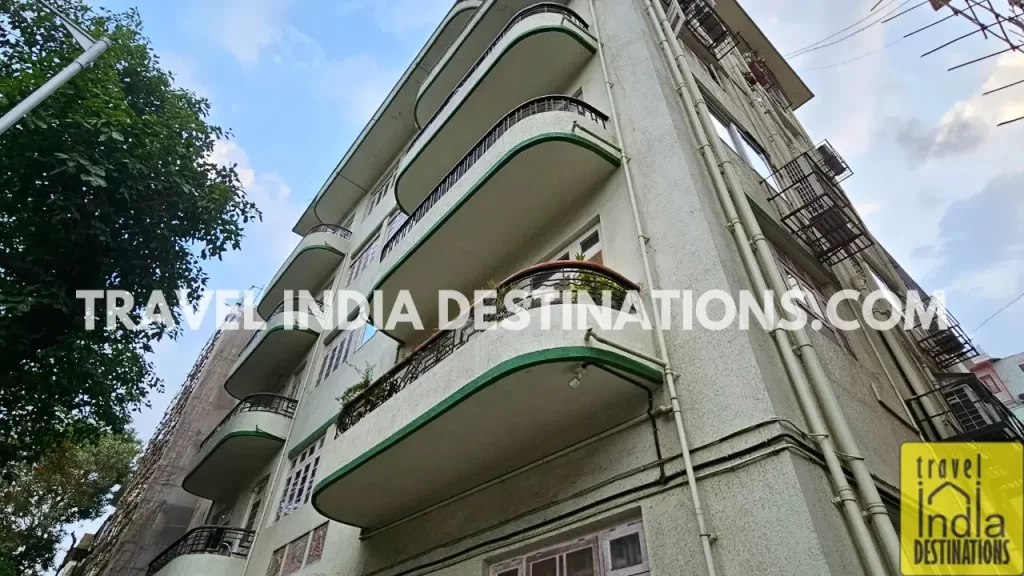
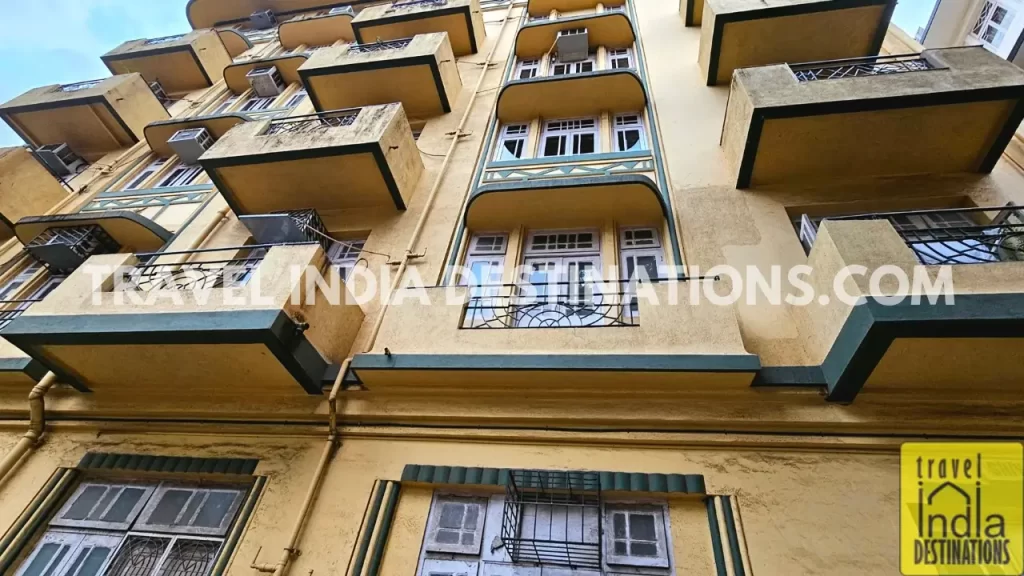
Various buildings here feature geometric motifs, nautical-inspired details, and curved balconies. Here you can find buildings like Fairlawn, Swastik Court, Queens Court, Rajesh Mansion, Empress Court, Rajjab Mahal, Shiv Shanti Bhavan, Oval View, and Firuz Ara.
Regal Cinema
Regal Cinema remains among the most iconic and old single-screen theatres in Mumbai. Established in 1933, Regal was one of the first cinemas in India to exhibit films in Western style. Located on Colaba Causeway, this Art Deco theatre in Mumbai has clean lines and elegant detailing.
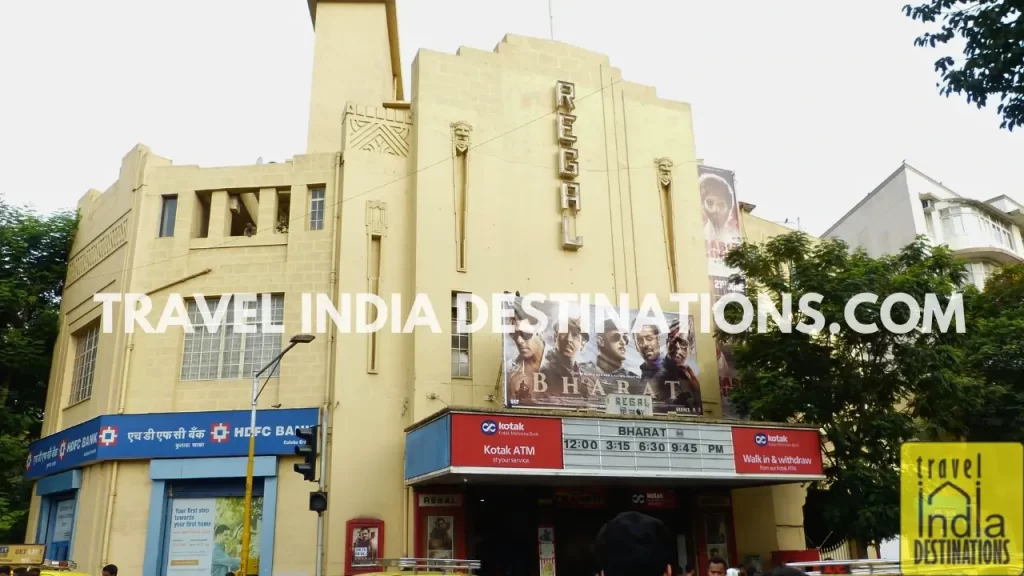
Unlike Eros Cinema, Regal still retains the old interiors making it one of the best-preserved Art Deco cinemas in India. If you’ve lived in Mumbai and are passionate about movies it is very unlikely that you’ve never watched a movie here.
New India Assurance Building
Constructed in the 1930s, the New India Assurance Building is among the most beautiful Art Deco buildings in Mumbai. Located close to the iconic Flora Fountain this building is certainly different from the rest in this list.
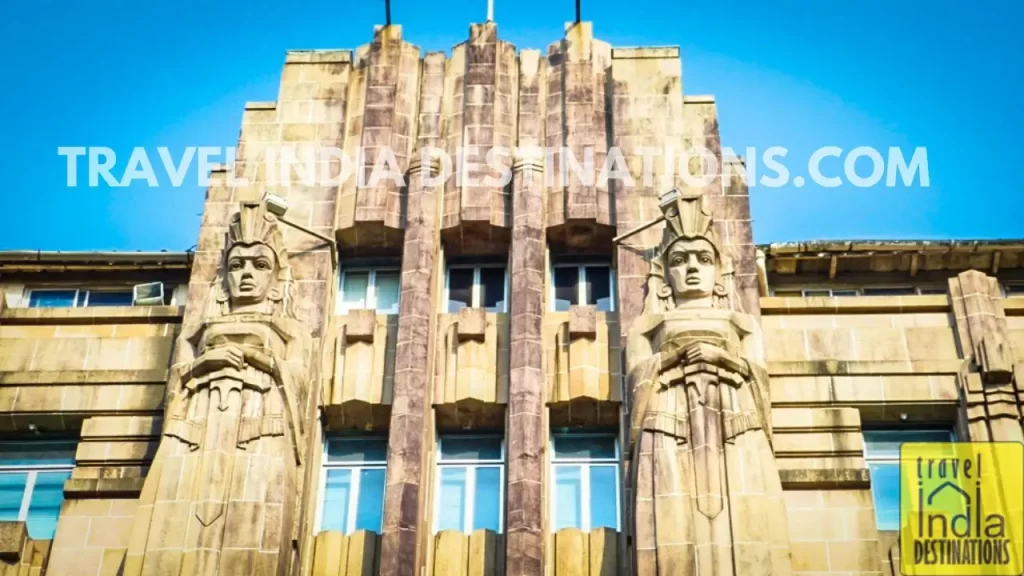
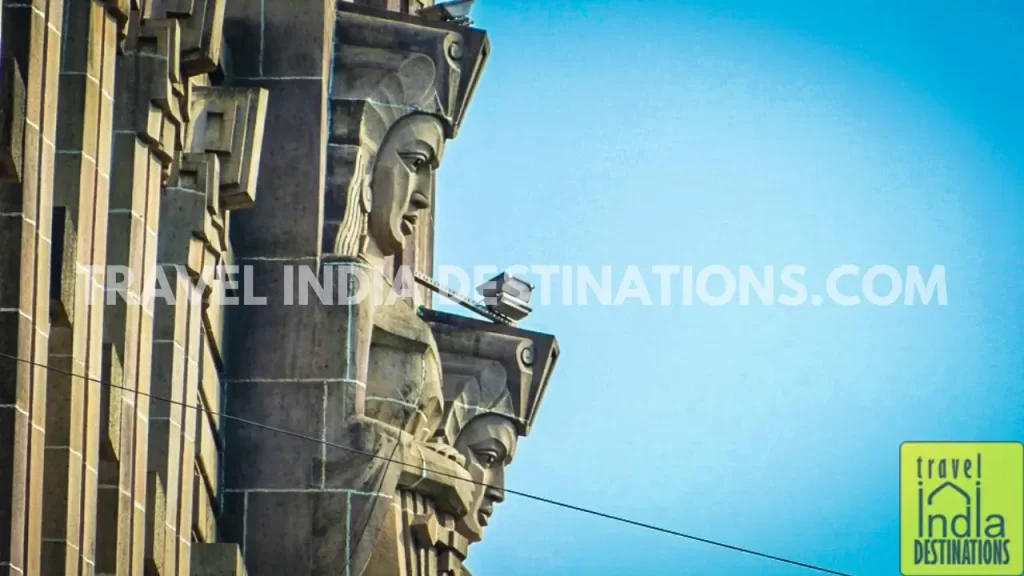
This building skips the pastel shades and instead opts for strong vertical lines that make this building seem larger than it is in reality. The relief work on the exterior instantly captures your imagination.
Liberty Cinema
Liberty Cinema, an Art Deco theatre in Mumbai, still boasts clean lines and elegance. The theatre symbolizes independent India, drawing influence from theatres like Regal and Eros
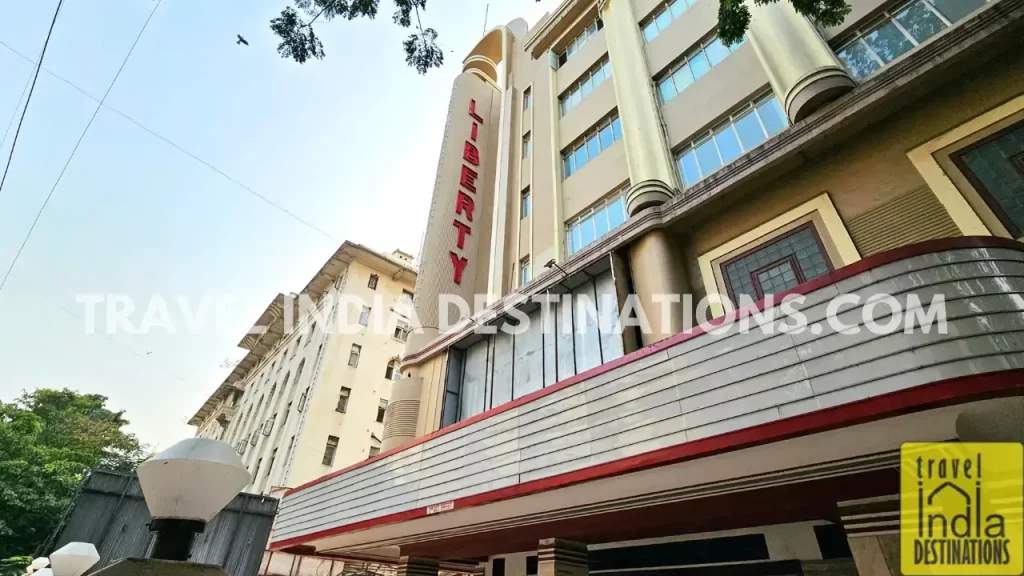
Designers lavishly decorated the cinema’s interiors with wood panels made from Canadian cedar and Burma teakwood. While the theatre is no longer functioning, the exterior of the building retains its original appearance in its prime days.
Marine Drive Buildings
One of the easiest ways to spot Art Deco buildings in Mumbai is by walking Marine Drive. It’s often referred to as the Queen’s Necklace due to its streetlights, which resemble a string of pearls when lit at night.
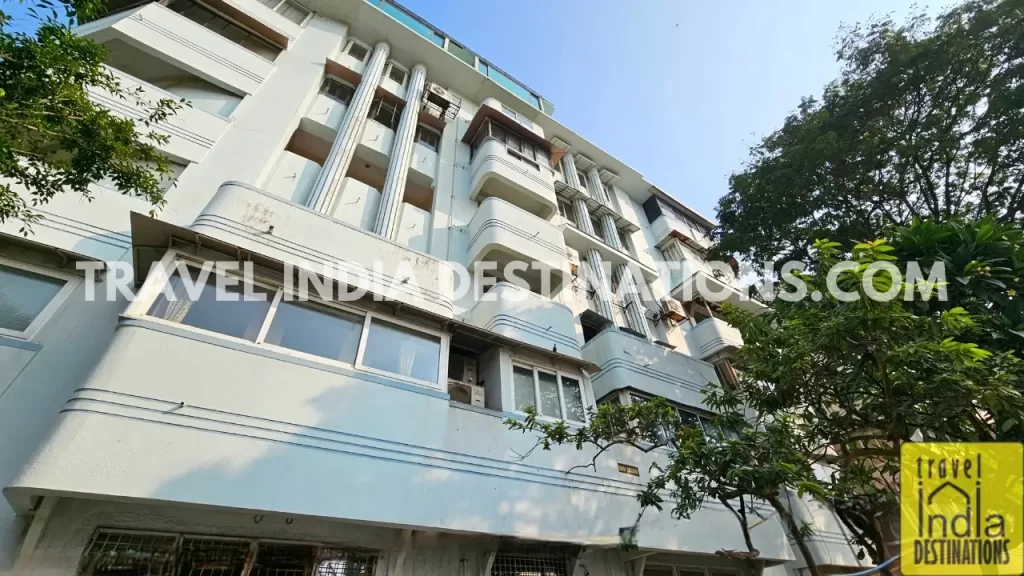
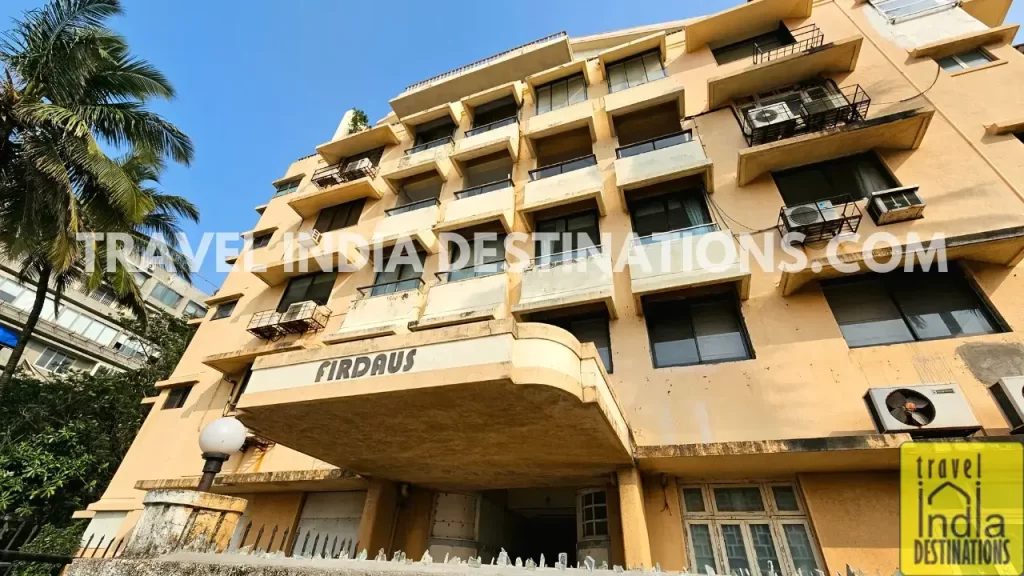
Builders designed various buildings overlooking the Arabian Sea in Art Deco style during the early 20th century. Today, these buildings are home to the city’s elite class. But you can still admire them as you take a walk down the curved promenade.
Aurora Talkies
Nestled in the bylanes of Matunga, Aurora Talkies remains one of the striking examples of Mumbai Art Deco buildings. This defunct movie theatre has all the curves and lines that you can find in most Art Deco buildings. Who knew that this 700-seat theatre, once a magnet for Tamil movie lovers would someday lie in neglect.
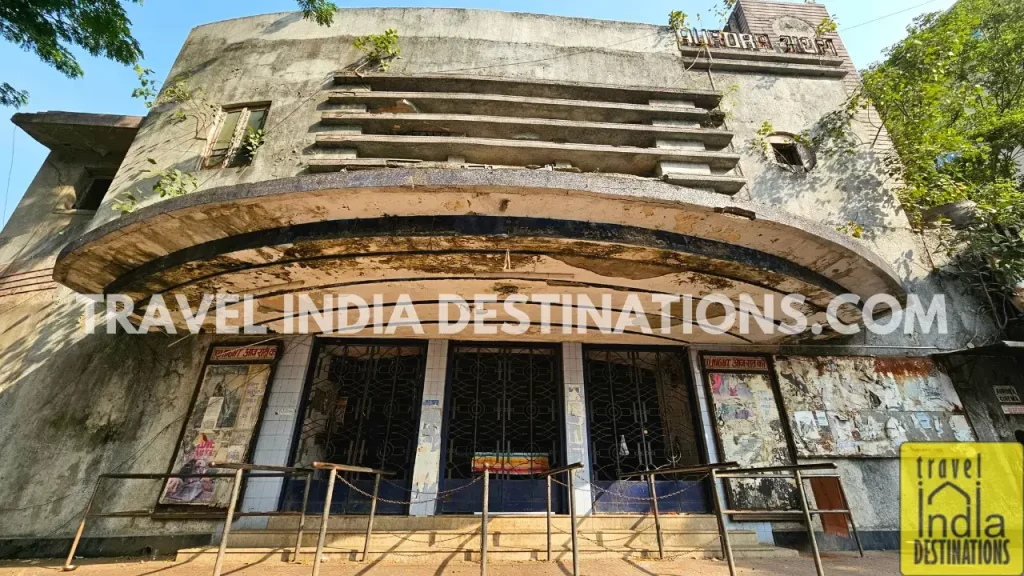
Areas like Dadar and Matunga also feature residential buildings in Art Deco architecture. However, Aurora Talkies is among the famous Art Deco landmarks in Mumbai that you should not miss.
Beyond popular landmarks, Mumbai has many residential buildings, schools, and other structures in Art Deco style.
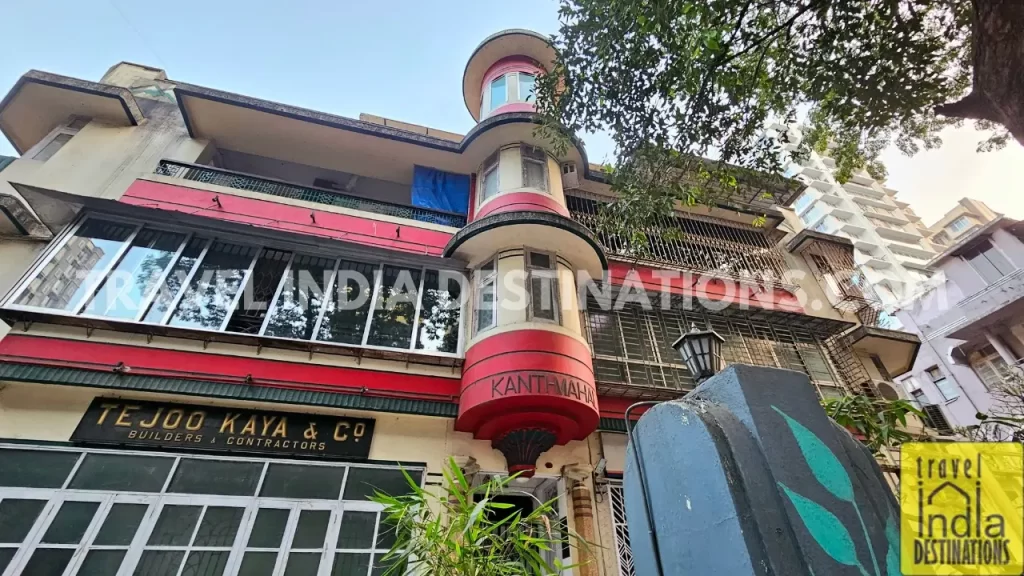
Conclusion: Why Art Deco Buildings in Mumbai Deserve Your Attention
Mumbai’s Art Deco buildings are more than just architectural masterpieces. These buildings are a glimpse into the city’s transition from colonial Bombay to a modern metropolis. Walking past their curved balconies, pastel facades, and geometric motifs, you’re stepping into a forgotten era of artistic expression.
But many of these structures face the threat of neglect, redevelopment, and modernization, putting Mumbai’s Art Deco heritage at risk. While some buildings have been restored, others struggle against time and changing urban landscapes.
Preserving them isn’t just about architecture—it’s about holding onto a piece of the city’s identity.
So, the next time you find yourself in Mumbai, pause for a moment. Look up from your smartphone and let these silent Art Deco sentinels whisper their stories. They’ve stood through time, watching the city evolve—now it’s your turn to see them, really see them, and let their timeless beauty remind you of Mumbai’s soul.
From all the Art Deco buildings in Mumbai which one is your favourite? I’d love to hear your thoughts in the comment section below.
1 comment
Sharukh, this is a marvelous and educational post. I should have realized that Art Deco was all over the world. I love the designs and architecture. Hugs to you and Sarah.